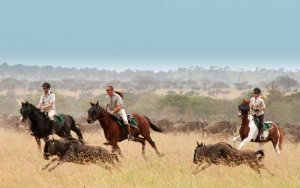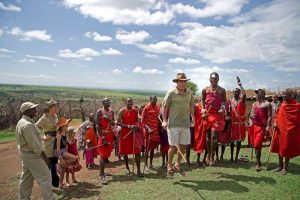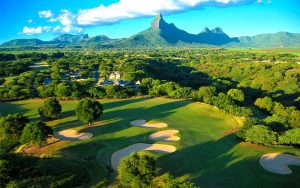When it comes to booking fantastic Kenya safari holidays, Ubon Safari should be your number one choice. We can take you around Kenya and explore its culture, heritage and attractions. On top of this, we will make that your time in Kenya is magical!
Kenya is a country in East Africa and Tanzania as its neighbour. Straddling the equator and stretching from the Indian Ocean’s coral reefs and white sandy beaches to the colossal spread of the Great Rift Valley, Kenya is a country of huge variety and exceptional beauty. Its lush grasslands, riverine forests, high plains and moorlands, mountain slopes and semi deserts make touring our luxury safari holidays in Kenya spectacular!
Mount Kenya is the highest mountain in Kenya and second highest in Africa after Mount Kilimanjaro. The two main cities in Kenya are Nairobi and Mombasa. Nairobi is the capital of the country and the largest city. Mombasa is the oldest and second largest city in Kenya.
Our Kenya safari holidays has never been better because Kenya has some of the world’s best game reserves where you can see the finest African flora and fauna.
Kenya’s famous Masai Mara game reserve lies in the southwest of the country
Amboseli National Park is in the Southeast located near the Tanzanian border. It offers spectacular views of Tanzania’s Mount Kilimanjaro (the highest longstanding mountain in Africa).
Lewa Wildlife Conservancy and Samburu National Park are located in the central part of northern Kenya. The parks are famous for its lions, elephants, giraffes, zebras, wildebeest and buffaloes.
When booking Kenya safari holidays to watch migrations, they are best done months in advance due to high demands and limited lodging in the Mara. Migration is during August and September. Also, Kenya is a fantastic destination for beach holidays with several located along the coastal regions.
You can visit Kenya all year round. The best time is during the dry season which is from June to October. You can visit parks from January to February.
CAPITAL CITY: NAIROBI
AIRPORT: JOMO KENYATTA INTERNATIONAL AIRPORT /
MOI INTERNATIONAL AIRPORT
CURRENCY: KENYA SHILLING (KSH)
LANGUAGE: ENGLISH AND KISWAHILI
VOLTAGE: 240V/50Hz BRITISH 3-PIN Plug
Go to our Visa page to find out whether you need a visa to enter Kenya http://thetravelvisacompany.co.uk/ubonsafari/kenya/
Find out more about Kenya on the largest travel guidebook online
https://www.lonelyplanet.com/kenya or the Wikitravel Guide http://wikitravel.org/en/Kenya
BEST TIMES:
JANUARY TO FEBRUARY AND JUNE TO OCTOBER
HIGH SEASON – JANUARY, FEBRUARY, JULY TO NOVEMBER
LOW SEASON – MARCH TO MAY (SOME LODGES ARE CLOSED)
BEST WEATHER:
JUNE – OCTOBER

FREQUENTLY ASKED QUESTIONS
DO I NEED A VISA
AUSTRALIA – YES / EUROPEAN COUNTRIES – YES / UNITED KINGDOM – YES / USA – YES Please enquire with the Kenyan Embassy in your country of Residence as we recommend you get you visa before you before you travel.
TIPPING
It is not mandatory to tip however we do recommend you to tip in Restaurants, Bars something that would suit you. For Drivers, Guides and Porters we recommend a minimum of USD 5 per person per day.
INTERNET ACCESS
Most places have WIFI / internet, however in camps and lodges you may be limited to some specified areas, in camping safaris thereis no internet.
MOBILE PHONE ACCESS
Most of the locations in Kenya have great mobile coverage especially in cities and towns. There’s limited access in some of the rural areas. A local sim would be easily available for purchase.
WHAT ARE THE TOILETS LIKE?
Western style Toilets are available in most hotels, lodges and camps. Some areas may have squat toilets.
DRINKING WATER
Drinking tap water is not recommended. Mineral water is always available.
ARE CREDIT CARDS ACCEPTED?
Please inform your Bank before you travel to ensure you will not have problems using your cards. Credit card facilities are available in western restaurants and hotels but not local shops.
ATMS:
ATMs are available in major cities and towns.
DO I NEED A TRAVEL INSURANCE?
It is mandatory you should have Health / Travel Insurance
PUBLIC HOLIDAYS
Please see http://www.worldtravelguide.net/kenya/public-holidays
ELECTRICITY / PLUGS:
Electricity in Kenya has 240V and 3 Pin flat plugs although some new hotels are now having round pin plugs so carry your travel plug.
DOES KENYA HAVE MALARIA:
Yes, visit your GP before you travel for your vaccinations and Malaria pills.
TRAVEL TIPS
- Dress respectfully, shoulders to knees should be covered especially in when entering places of worship.
- Respect local traditions, customs and religions
- Please do not buy coral, ivory or any animal products
- Dispose of litter appropriately in bins
- Do not throw cigarette butts especially in the parks as it may cause fire and destroy wildlife and habitats.
- Don’t be afraid to learn the local language and smile.
- Please support the local shops and people
- When taking photos of people please ask permission
- Be careful on coastal areas with no topless sunbathing and please cover up when moving off the beach.
- All national parks have a no off road rule.
- When near wildlife please keep noise down as it would disturb them.
- No sudden movements near wildlife.
- Do not wear contact lenses.
If you would like to book luxury Kenya safari holidays, make sure to talk to Ubon Safari by calling them on +44 203 198 0484 and one of their helpful team members will be more than happy to make the arrangements with you to provide a luxury safari holiday in African.




